Somewhere for the pollinators to go: A case study of establishing large-scale pollinator habitat
Establishing pollinator habitat through the Bee & Butterfly Habitat Fund’s Seed a Legacy Program in southeast Michigan.

Land stewards seeking to manage property in a sustainable way often wish to support pollinators as a first step toward biodiversity and habitat renewal. Planting habitat with intent to nurture foraging bees can be a great way to support local populations and build a lasting legacy for pollinators, songbirds and other animals on your property.
Whether the space is large or small, pollinators can be encouraged to thrive by engaging in a few sustainable techniques. Observing the site to determine which species of plants will grow well, removal of unwanted species, and selecting a palette of flowering plants to provide nectar and pollen the entire season is paramount. Preparing the site using the least disruption possible and creating a vision for long-term sustainability will ensure a successful venture with lasting impacts. There are many ways to establish pollinator habitat, and this case study provides one example that may be of interest to land managers who are interested establishing pollinator habitat.
Background
Jeremy Rhodes of JA2 Bee Farm in Macomb County, Michigan, became interested in installing pollinator habitat on his land through his work as a small-scale beekeeper. He and his family purchased 11 acres, which included 5 acres of agricultural land they leased to a local farmer. Rhodes’ parents were gardeners, and he has always had an interest in plants.
In addition to keeping honey bees, his family raises mason bees and monarch butterflies, and they wanted to support their bees and other pollinators in the area. He started investigating the process for establishing a medium-scale pollinator habitat but was halted because of the associated costs.
Then he came across a Facebook post from the non-profit Bees in the D provided information about a program offered by the Bee & Butterfly Habitat Fund called the Seed a Legacy Program. The fund offers free seed and support to landowners to convert land to native prairie. The Bee & Butterfly Habitat Fund also created a Pollinator Habitat Establishment & Management Guide as a free, online resource.
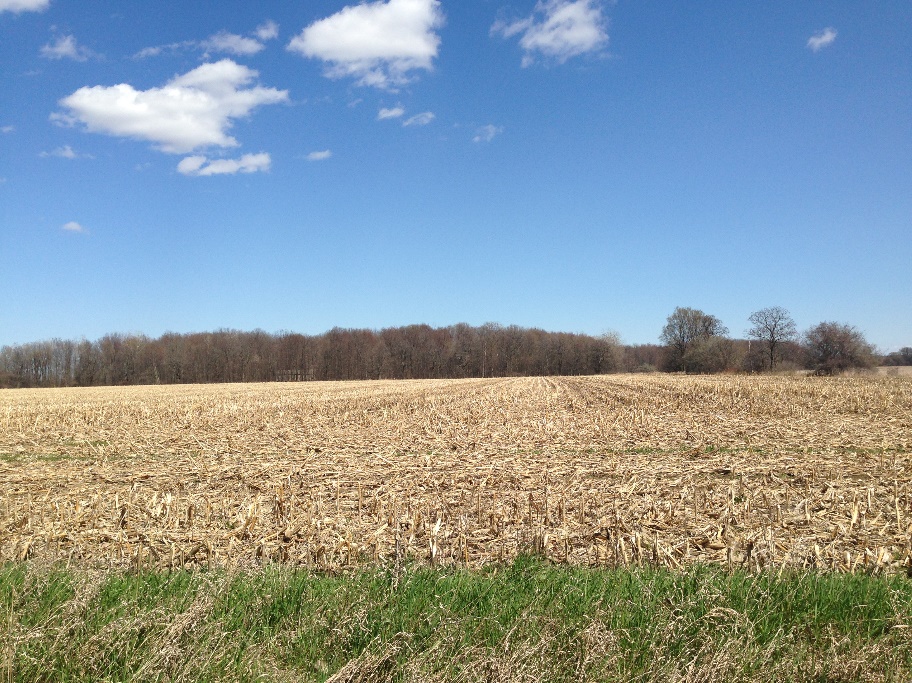
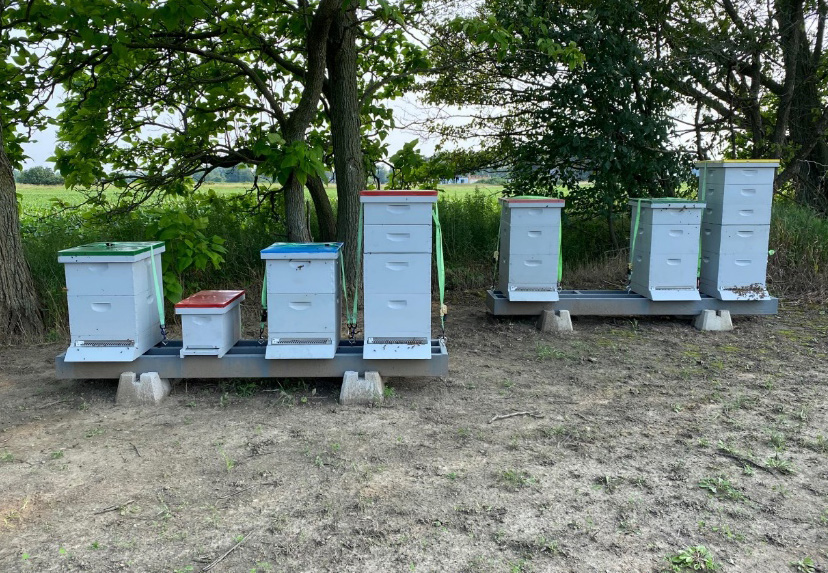
Goals and benefits of the program
Rhodes’ family property is surrounded by agricultural land. Because of their work with monarch butterflies and honey bees, they were excited to install habitat to “give pollinators somewhere to go.”
Rhodes researched prairie mixtures, grasses and native plants, but the costs of seed were a bit overwhelming due to the acreage he was trying to cover. The Seed a Legacy program, however, provides free pollinator seed mixtures that have been engineered to provide excellent pollinator habitat throughout the entire growing season. The program also provides access to a team of biologists that assist with planting techniques and other technical support, if needed. The program removes the guesswork and some of the associated costs from the pollinator establishment plan. Rhodes decided to apply.
The online application for the Bee and Butterfly Habitat Fund Seed a Legacy program involved taking photos of the land and sharing information about the surrounding landscape via aerial photos. Aerial photos can be requested from a USDA office or acquired online from applications like Google Earth. Overall, Rhodes found the application process to be straightforward and user-friendly.
The Seed a Legacy Program requires a five-year agreement to maintain the habitat where the pollinator habitat is installed. The site must be prepared properly for planting, and this preparation is the most critical step. The applicant is also responsible for placing two signs provided by the Bee and Butterfly Habitat Fund, one near the field and another near a road.
Site preparation
Before Rhodes installed the habitat, the land was in a corn, soy and wheat rotation. The Butterfly Habitat Fund’s Seed a Legacy program recommends that land managers plant soybeans as site preparation because soybeans provide nitrogen to the soil and a clean seedbed for successful seed-to-soil contact. Nitrogen benefits the native grasses and forbs, and the soybeans reduce weed pressure by allowing the land manager to apply herbicide (Roundup Ready soybeans) to eliminate weeds while allowing the soybeans to flourish. After the soybeans were harvested, there is a clean seedbed ready to plant.
Following the Bee and Butterfly Habitat Fund’s guidelines, Rhodes found a local farmer to plant and harvest soybeans. This timeline allowed him to plant in the autumn once the soybeans were harvested and soil temperatures were steadily below 50 degrees Fahrenheit, which prevents the native seeds from germinating.
For water management, Rhodes cut swales, or shallow channels, because he wanted to plant in a field that held water much of the year. This process required about 60-80 hours of tractor work to direct water towards the edges of his property. Cutting swales is not necessary unless the property has significant low spots that collect water. Moving the water away from the habitat will increase the establishment success.
A few weeks prior to seeding, Rhodes sprayed the property with glyphosate to kill any noxious weeds and grass that grew once the soybeans were harvested. He used a 25-gallon electric powered sprayer to apply the glyphosate at a rate of 2 quarts per acre.
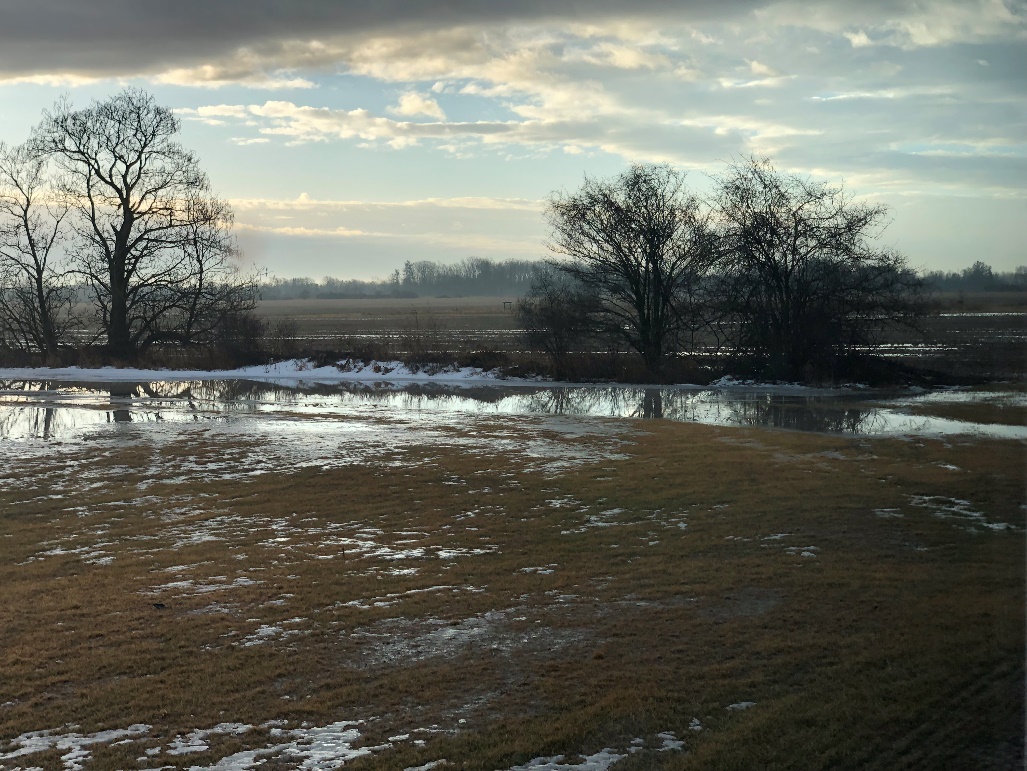
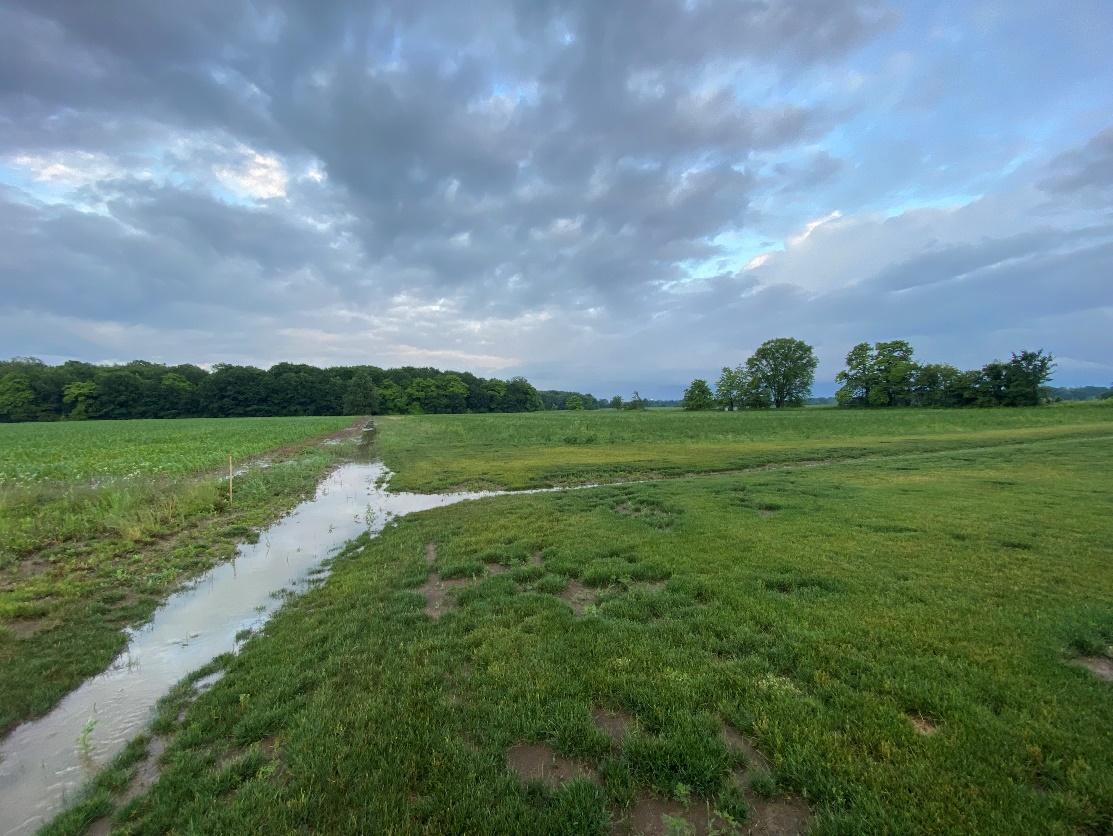
Plant selection
The Bee and Butterfly Habitat Fund’s Seed a Legacy Program provides pre-designed mixtures of pollinator seeds. Two and a half acres were planted in the program’s Michigan honey bee seed mix, composed primarily of clover, and the other 2.5 acres were planted in the Michigan monarch butterfly seed mix that includes more than 60 species of wildflowers plus milkweeds.
Planting
Rhodes initially hoped to no-till drill the site and rented a drill from his local Blue Water Conservation District. However, an early season snowfall occurred in mid-November, and the drill quickly clogged with soybean stubble and was infeasible to use. As an alternative, he attached a three-point spreader to his tractor to distribute the seed with the methods outlined by the Bee and Butterfly Habitat Fund.
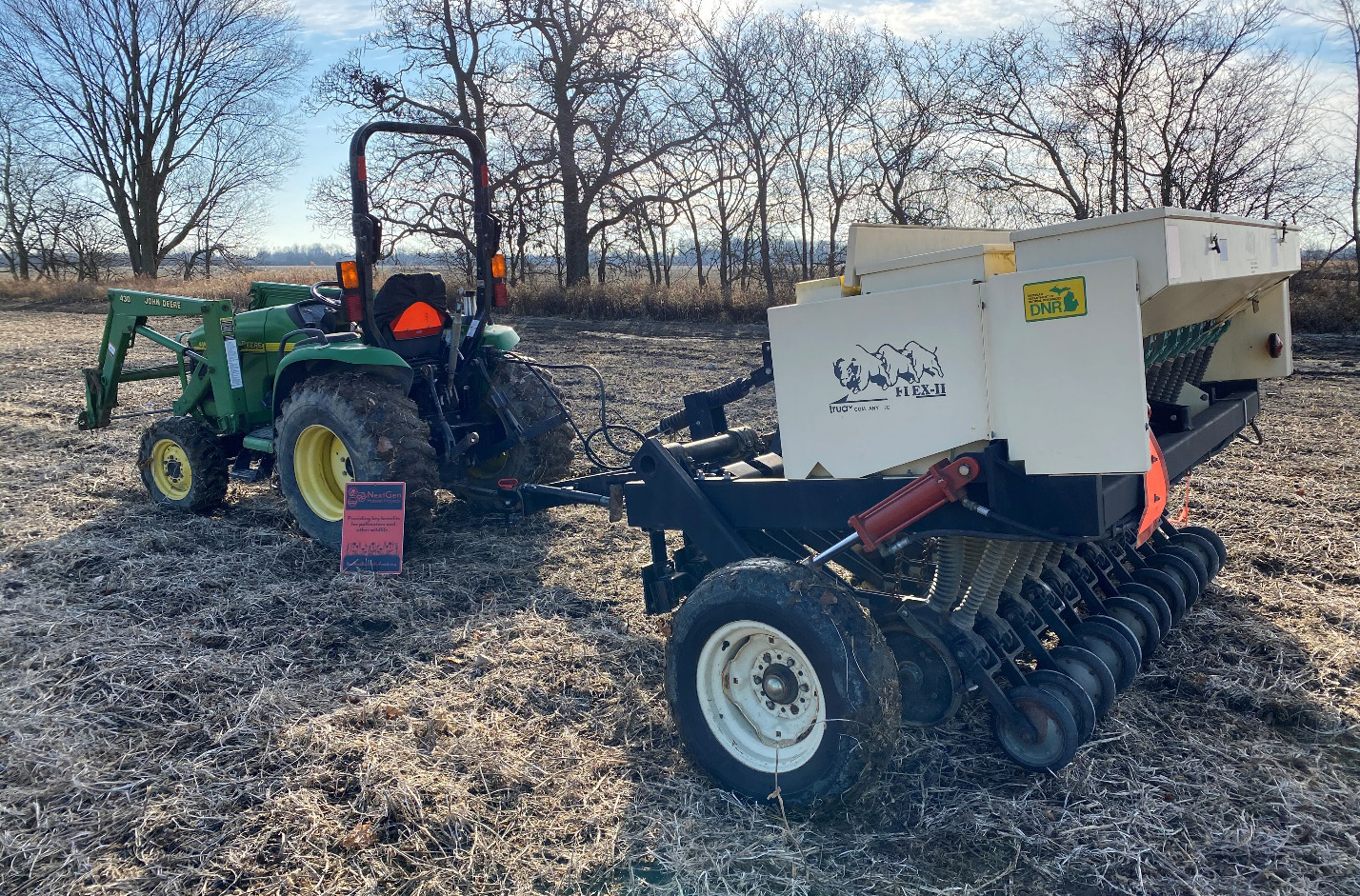
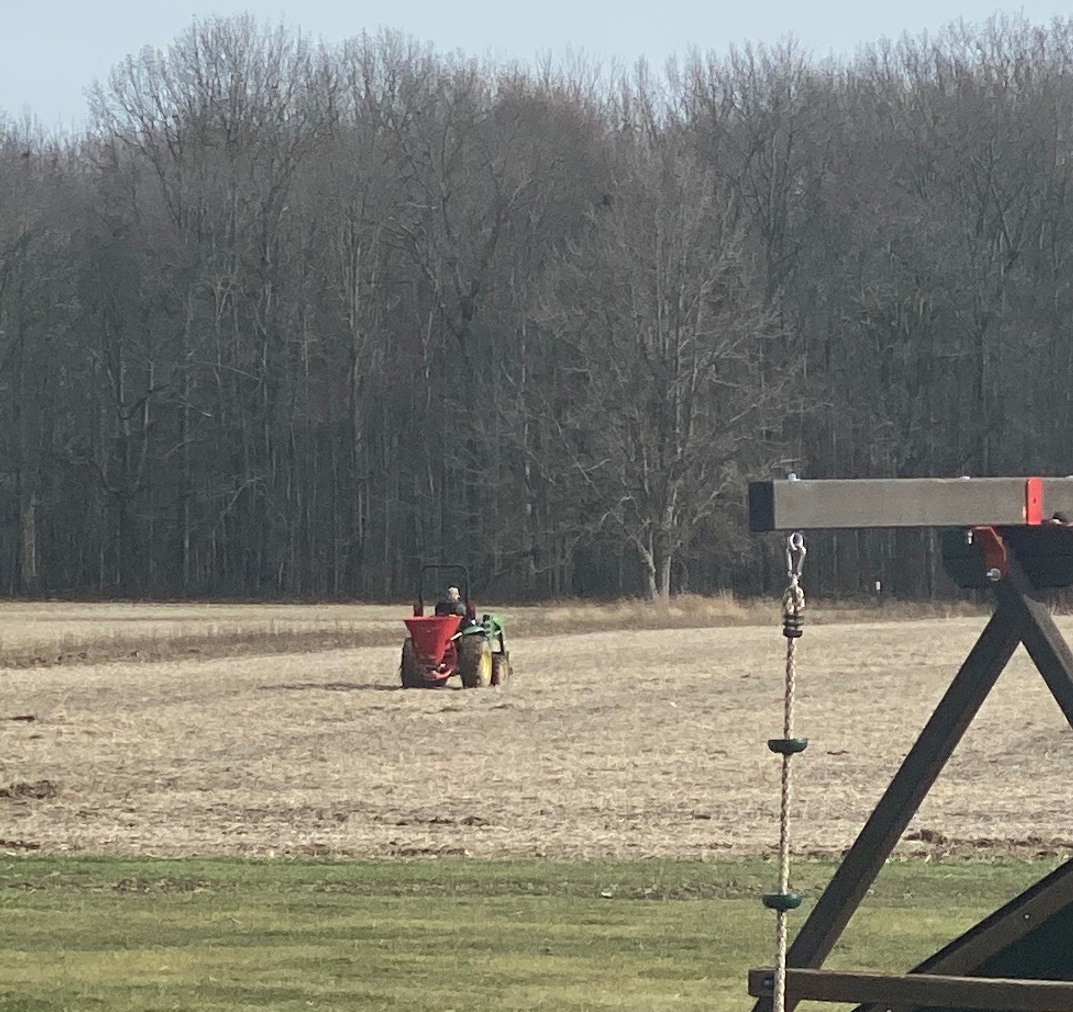
The Bee and Butterfly Habitat Fund adds rice hulls to bulk up the mixture so it's easier to spread. Rhodes’ bee mixture was 14.8 pounds of pure seed, or 22.5 pounds seed plus rice hulls. The butterfly mixture was 10.3 pounds of pure seed, or 19.62 pounds of seed plus rice hulls.
Rhodes spread the seeds in a crisscross pattern (see diagram below) and kept the honey bee seed mix separate from the monarch butterfly seed mix. He cross broadcasted the seed at half the rate because it’s better to spread it on the light side and go over the area two or three times for a uniform coverage than to spread seeds too heavy and run out of seeds before the ground is covered. He targeted 7.85 pounds per acre for the monarch mixture and 9 pounds per acre for the bee mix. To calculate the rate of the spreader, land managers can spread seeds over a tarp and count the number of seeds per foot.
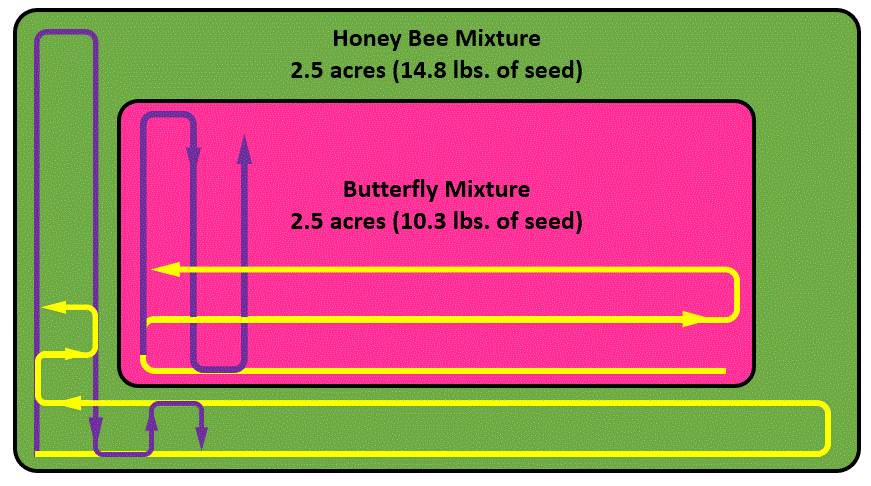
Long-term maintenance
In the first year, mowing is critical for maintenance. Weeds must be cut short to prevent them from seeding and germinating for the following year. The recommendation is to keep the vegetation to around 10-12 inches tall. Rhodes used his rotary cutter when the weeds approached the 15-inch mark. Cutting at this height prevents too much litter, or cut plant material, from blocking the native plants’ access to sunlight and airflow.
In spring of 2021, Rhodes reported that the habitat came up slowly due to drought conditions in southeastern Michigan. By late June, however, rain kicked plant growth into overdrive. He saw many new plants emerging and observed native bees, monarch butterflies, hummingbirds, deer and turkeys in the field. During this time, his honey production increased as well, which he attributes to the field’s clover and bee phacelia blossoms.
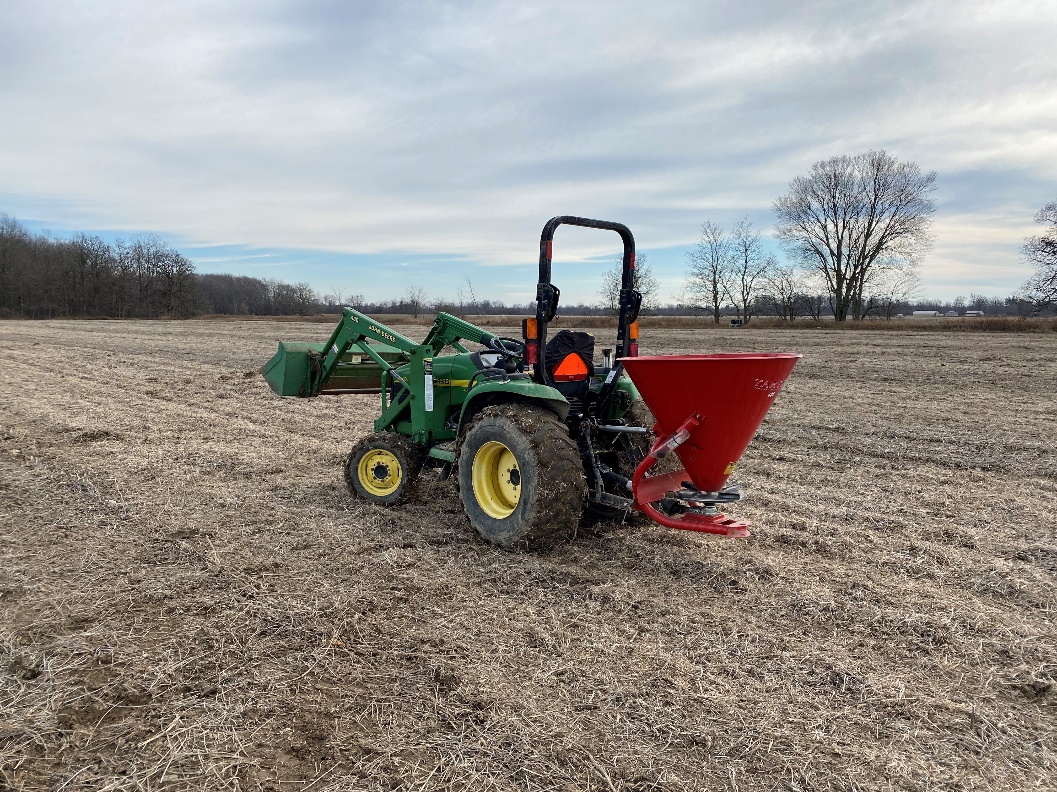
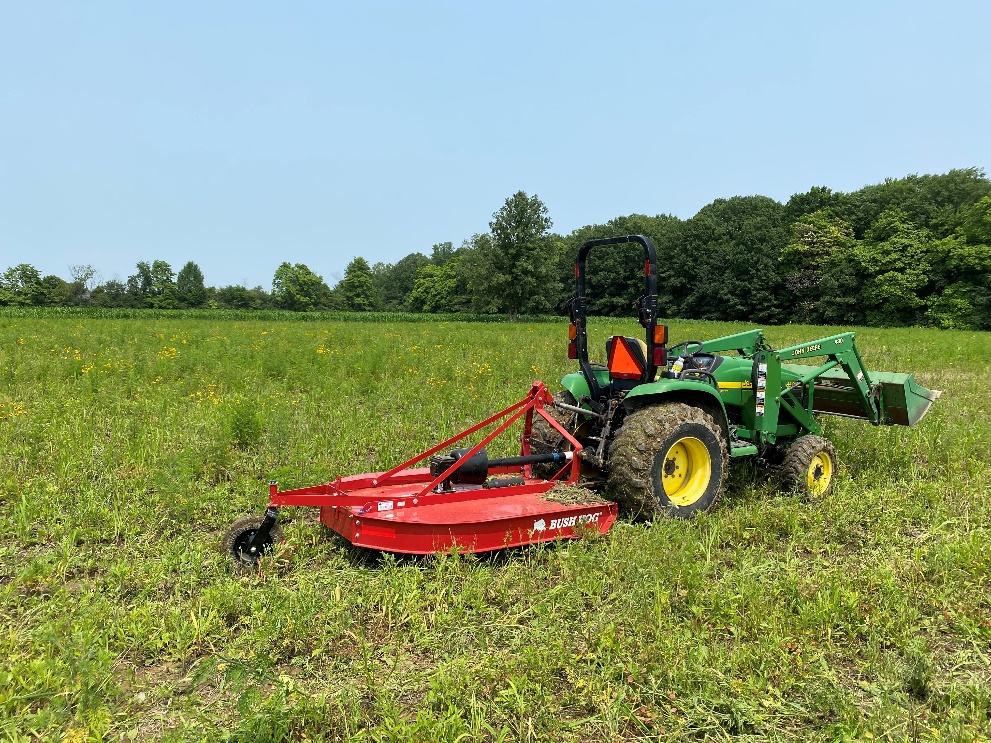
At the end of the year, Rhodes will work with the Bee and Butterfly Habitat Fund to establish a management plan for 2022, which may consist of more mowing or selective herbicide applications.
For long-term maintenance and regeneration, one of Bee and Butterfly Habitat Fund’s recommendations is to do a prescribed burn four to five years after seeding. Rhodes is hesitant to use that method because of the habitat’s proximity to his home and other structures. If he decides not to burn, he will mow with his rotary cutter to trigger regeneration.
Summary
Taking a long-term approach when setting expectations for pollinator habitats is key. When Rhodes seeded in November of 2020, his expectations for 2021 were low. He understood that pollinator habitat can take several years to establish, but he was pleasantly surprised to see some growth occur in the first year.
Rhodes shares that the habitat installation was not cumbersome but having a tractor has been beneficial and removed the physical work out planting and maintenance. He purchased implements for his tractor, such as a box blade, rear blade, spreader and rotary cutter, but most attachments are available to rent from an equipment store or through a local conservation district. Partnering with local farmers is helpful to manage the land prior to seeding.
Rhodes appreciates the Bee and Butterfly Habitat Fund’s support. The program provided good resources and access to a biologist. He said that having access to a source of high quality, free seeds is also a huge asset.
As time flies by, so will the butterflies and bees at Rhodes’ pollinator habitat. With some maintenance and care, it will continue to grow, provide a refuge in his agricultural area, and give pollinators a place to go—just as he hoped.
Bees and beneficial insects comprise the world’s hardest-working workforce. With over 450 species of bees in Michigan, creating a diverse habitat that helps them thrive and will have far-reaching impacts on our state.
Other articles in series
- USDA funds available to establish pollinator habitat on your land
- Pocket of paradise: A second case study of establishing large-scale prairie planting
- A refuge for pollinators: A case study of establishing large-scale pollinator habitat on marginal farmland using federal funds
Resources
- Michigan State University Extension
- Michigan Pollinator Initiative resources on large-scale pollinator plantings
- MSU Extension Smart Gardening for Pollinators tip sheets
Acknowledgment
Thank you to the Michigan Department of Agriculture and Rural Development for securing funding from the U.S. Environmental Protection Agency for Michigan State University to implement strategies in the Michigan Managed Pollinator Protection Plan.



 Print
Print Email
Email